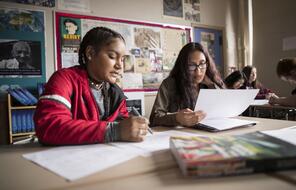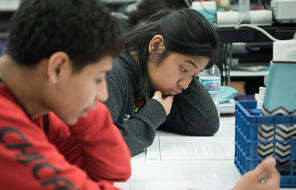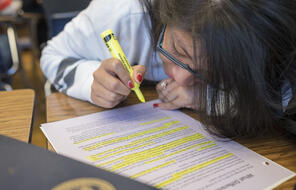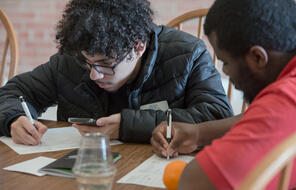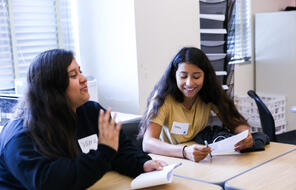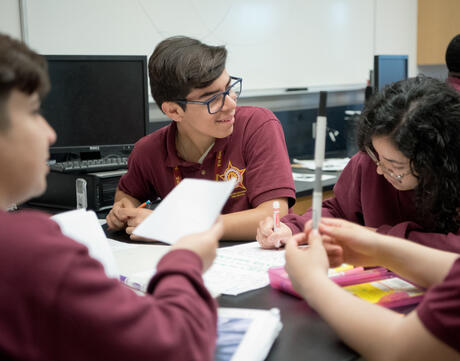
Agency, Choice, and Action
At a Glance
Language
English — USSubject
- English & Language Arts
Grade
11–12Duration
One 50-min class period- Culture & Identity
Overview
About This Lesson
All too often, when reflecting on moments of decision-making in life and in literature, we can be quick to say what someone should have done without considering the risks and rewards involved in their choices, nor the many factors impacting their agency in the moment.
In this lesson, students engage in a jigsaw activity to read and discuss a collection of coming-of-age personal narrative essays written by young people. The resources and activities support them to engage with complex questions about the relationship between someone’s agency and their choice of action or inaction in moments that might feel uncomfortable, or even scary. Engaging with these questions deepens students’ understanding of human behavior, while also inviting them to draw connections to their own lives and experiences.
Preparing to Teach
A Note to Teachers
Before teaching this lesson, please review the following information to help guide your preparation process.
Lesson Plans
Activities
Materials and Downloads
Quick Downloads
Download the Files
Download allGet Files Via Google
Agency, Choice, and Action
Introducing Agency
The Power of Belonging
Unlimited Access to Learning. More Added Every Month.
Facing History & Ourselves is designed for educators who want to help students explore identity, think critically, grow emotionally, act ethically, and participate in civic life. It’s hard work, so we’ve developed some go-to professional learning opportunities to help you along the way.
Exploring ELA Text Selection with Julia Torres
On-Demand

Working for Justice, Equity and Civic Agency in Our Schools: A Conversation with Clint Smith
On-Demand

Centering Student Voices to Build Community and Agency
On-Demand


